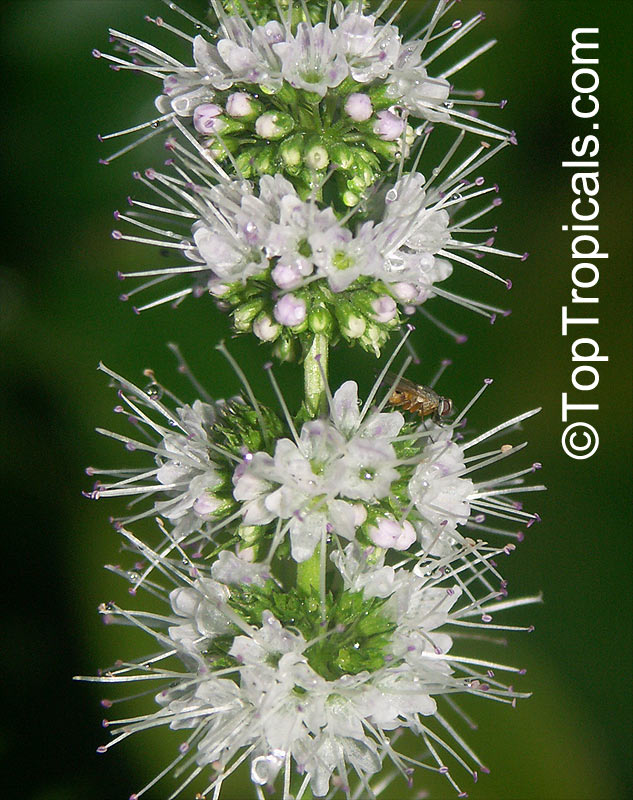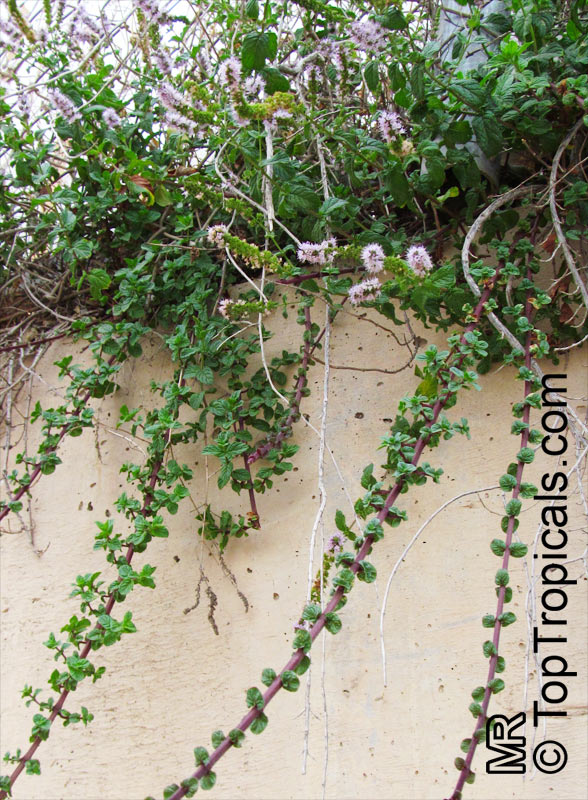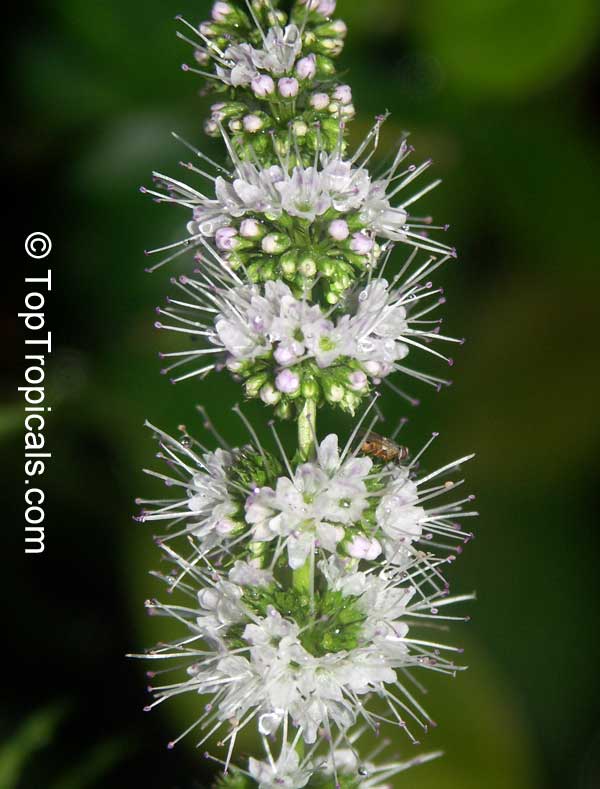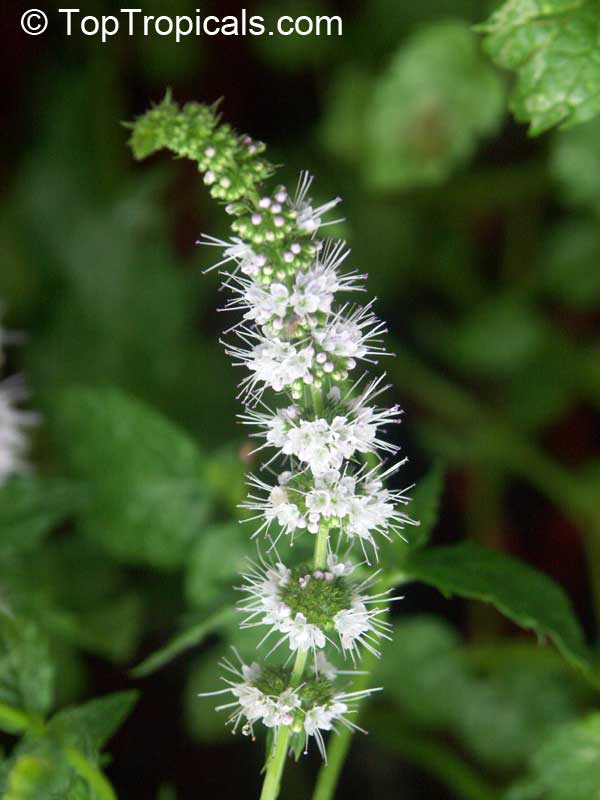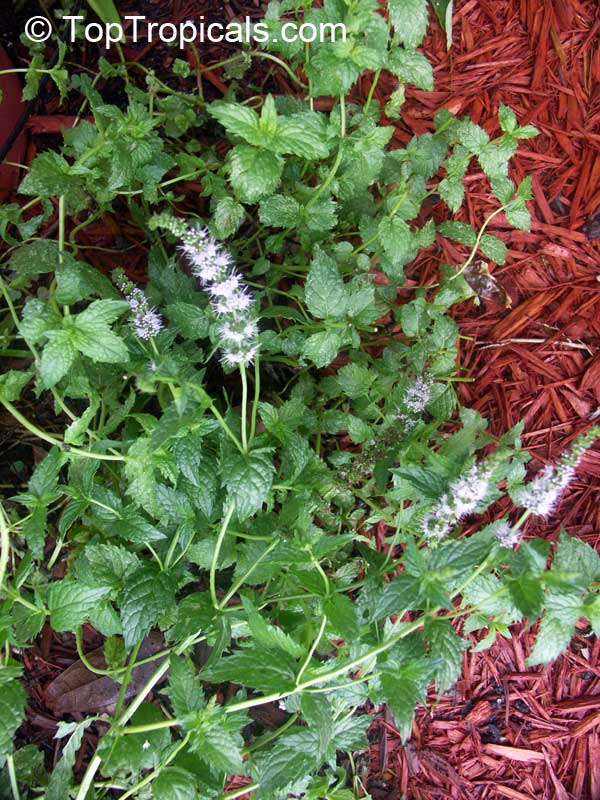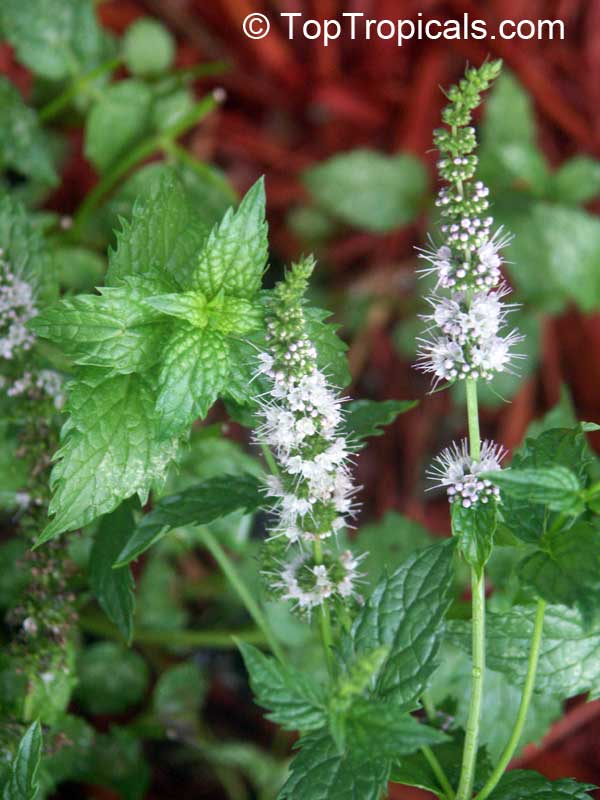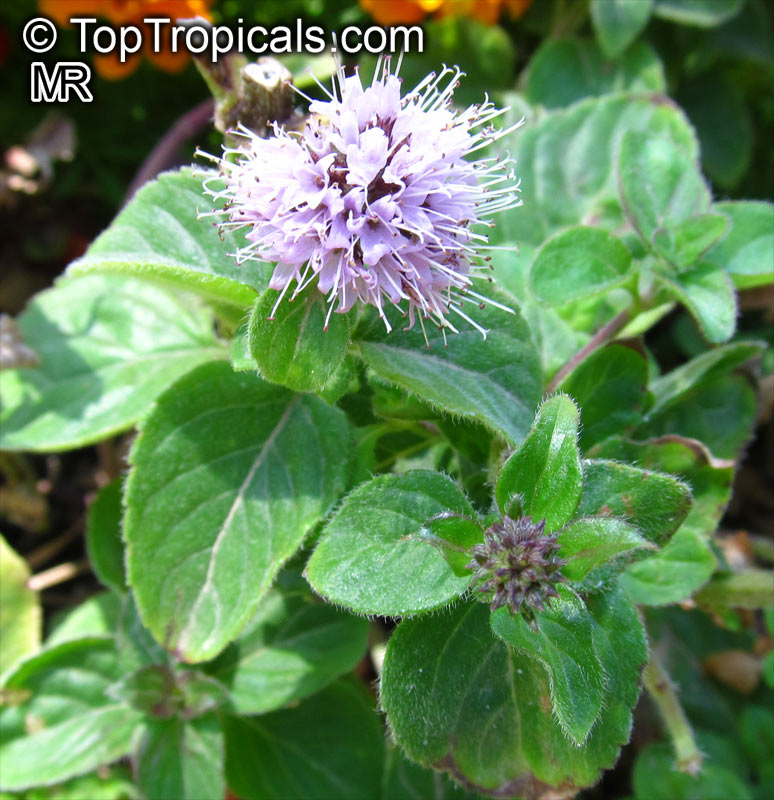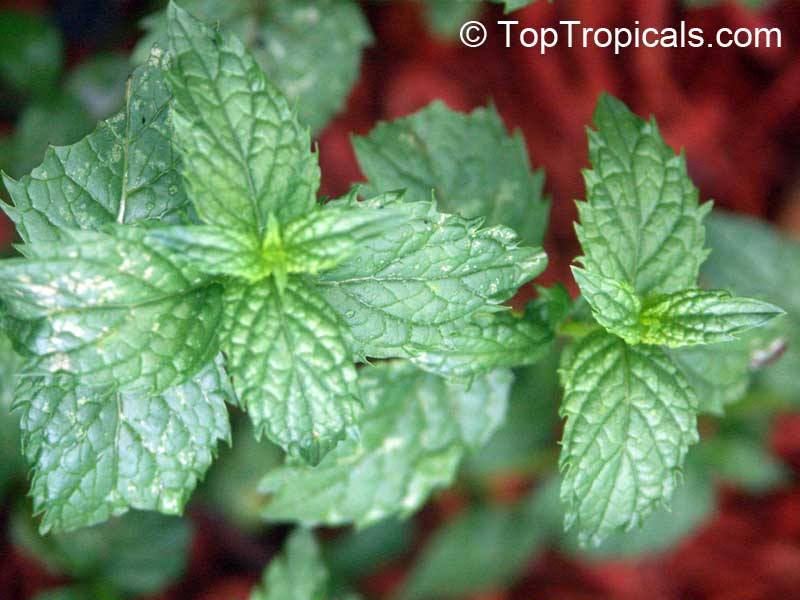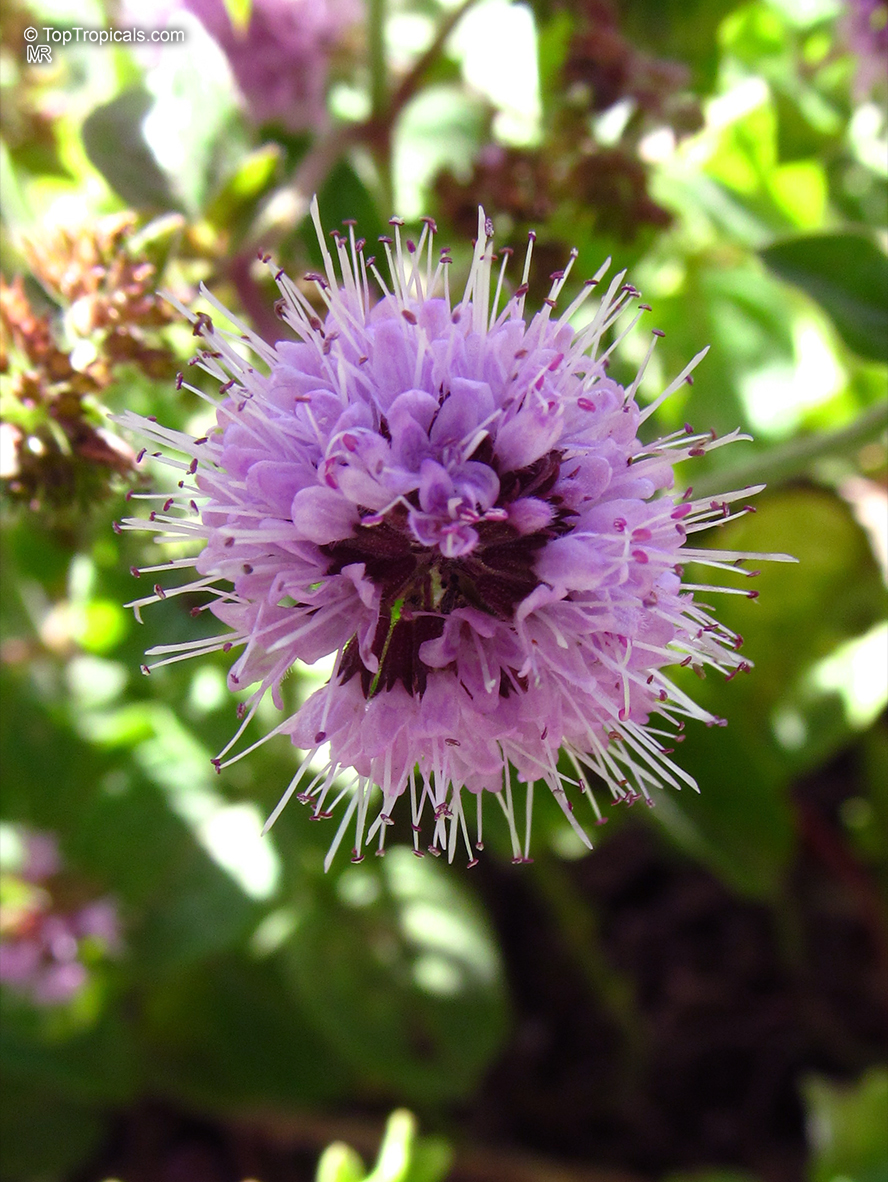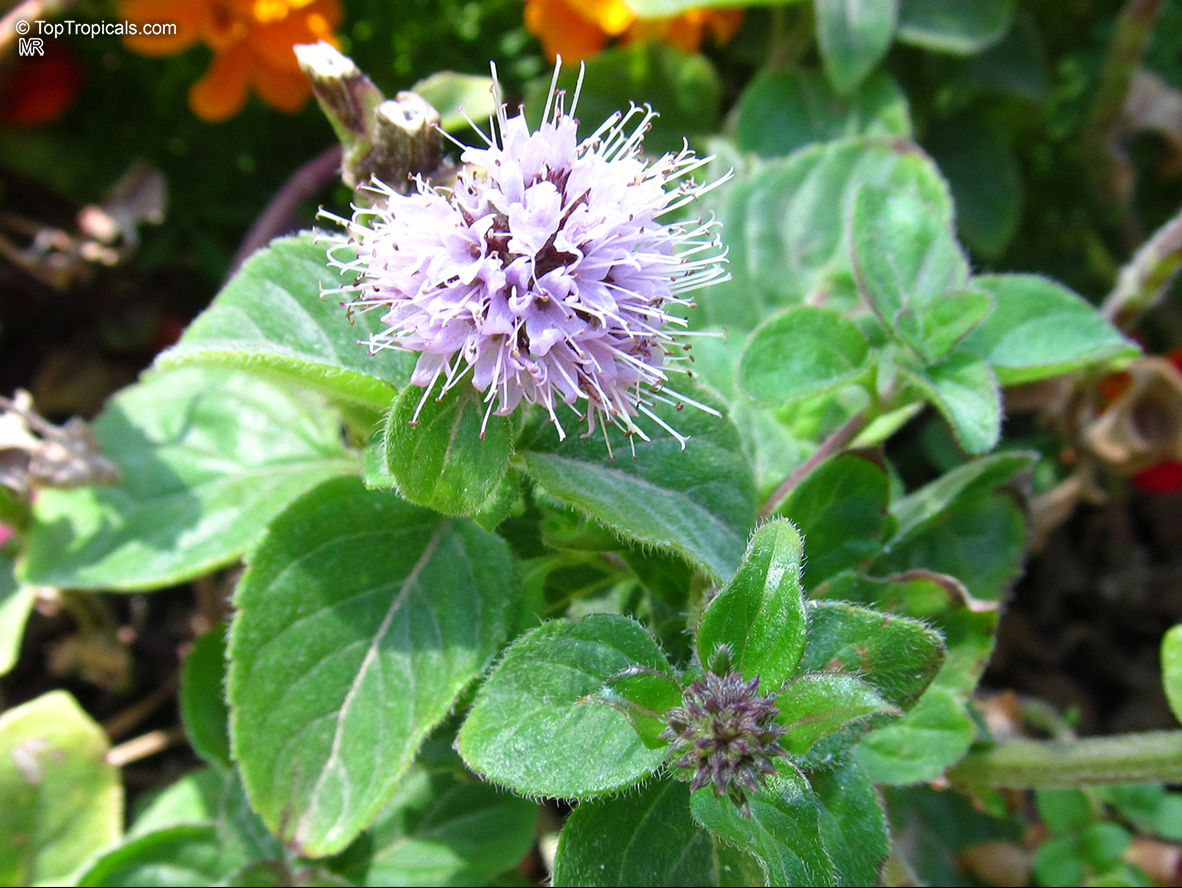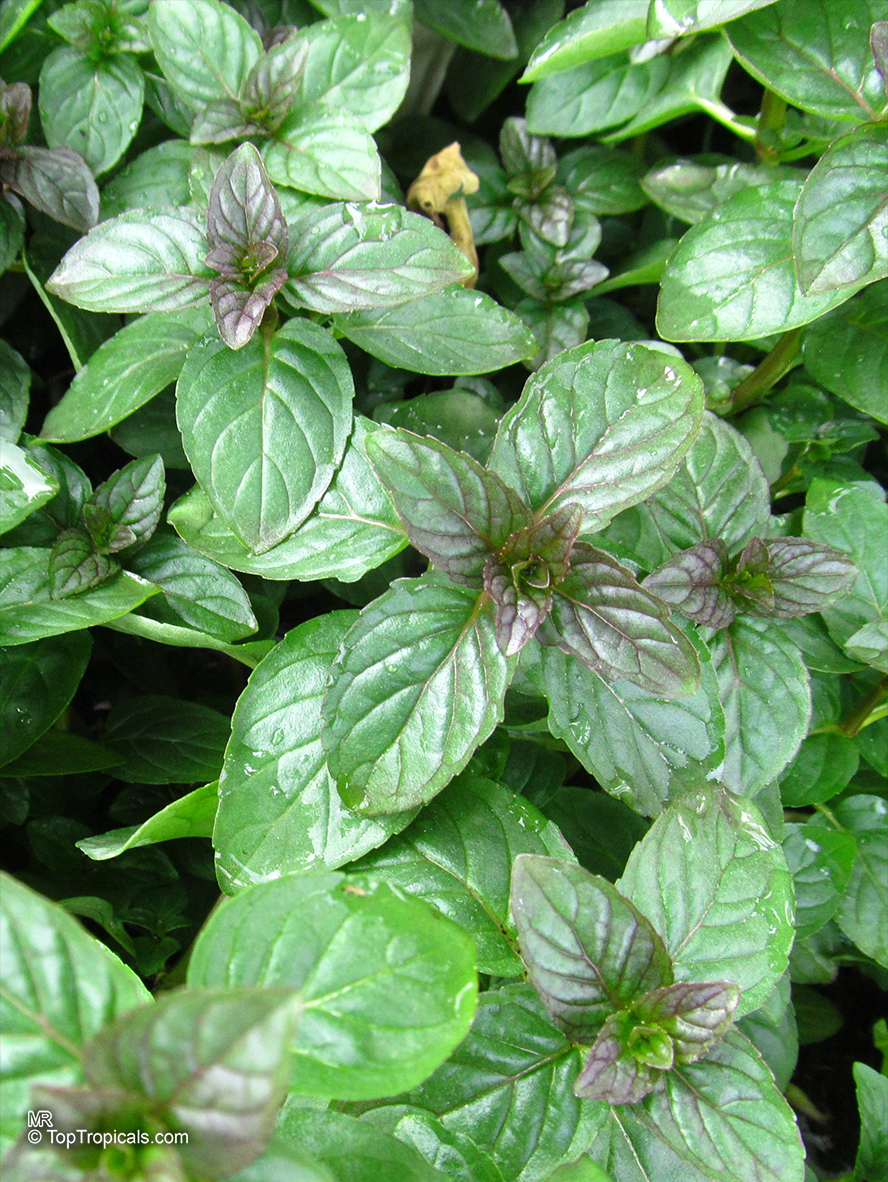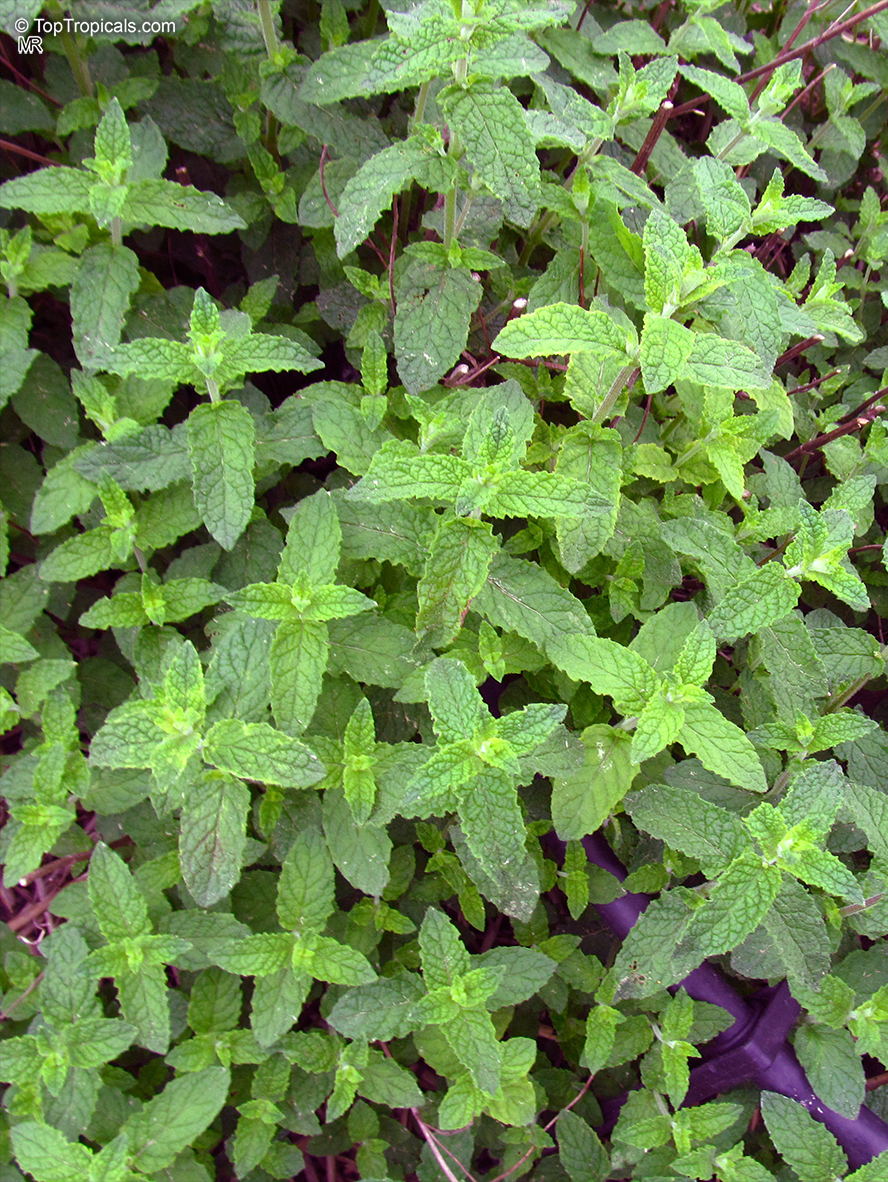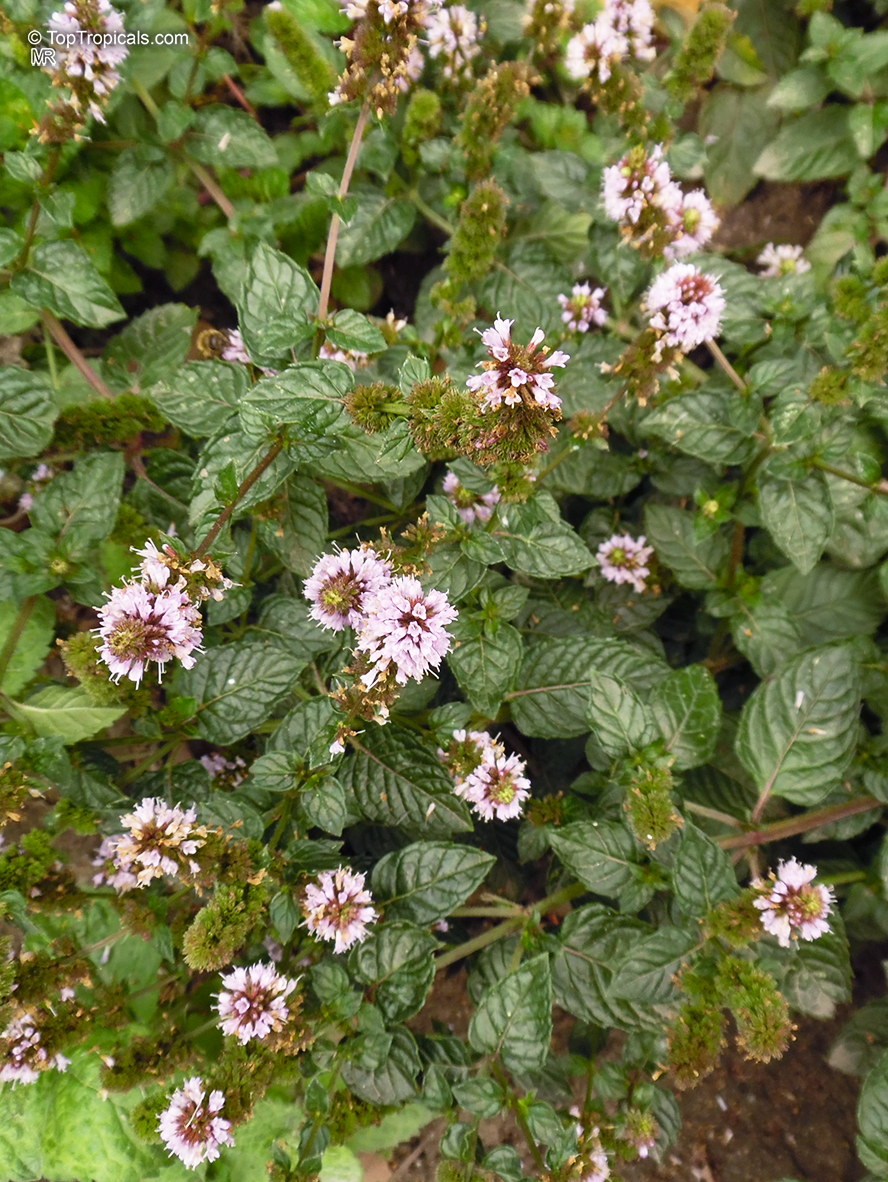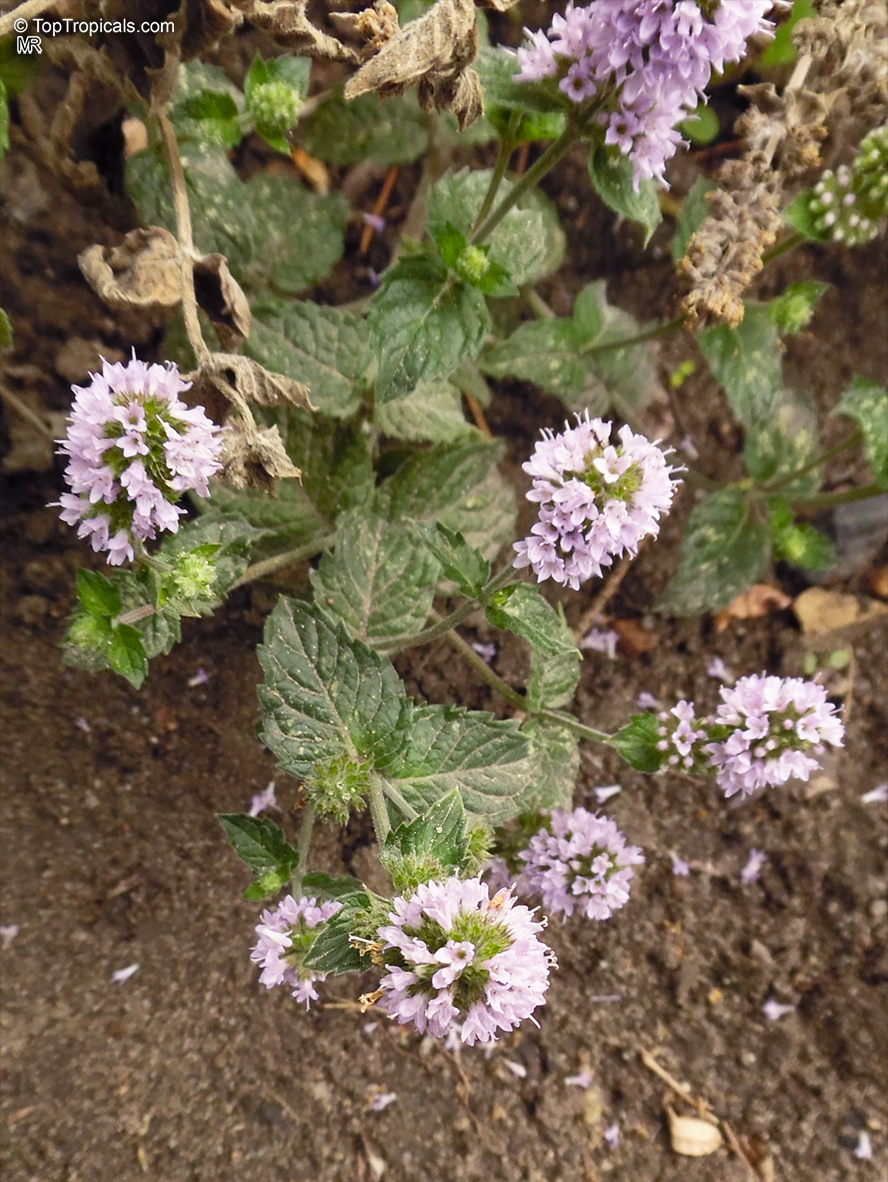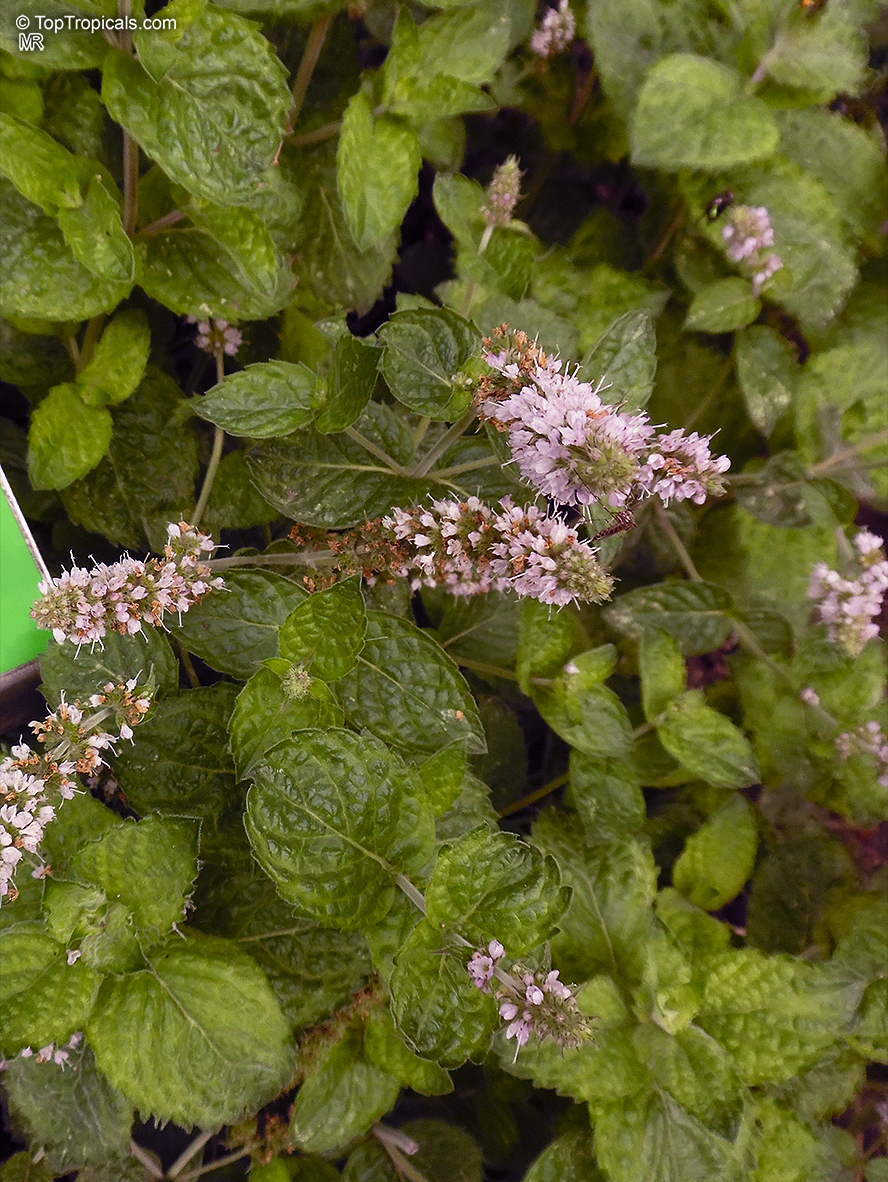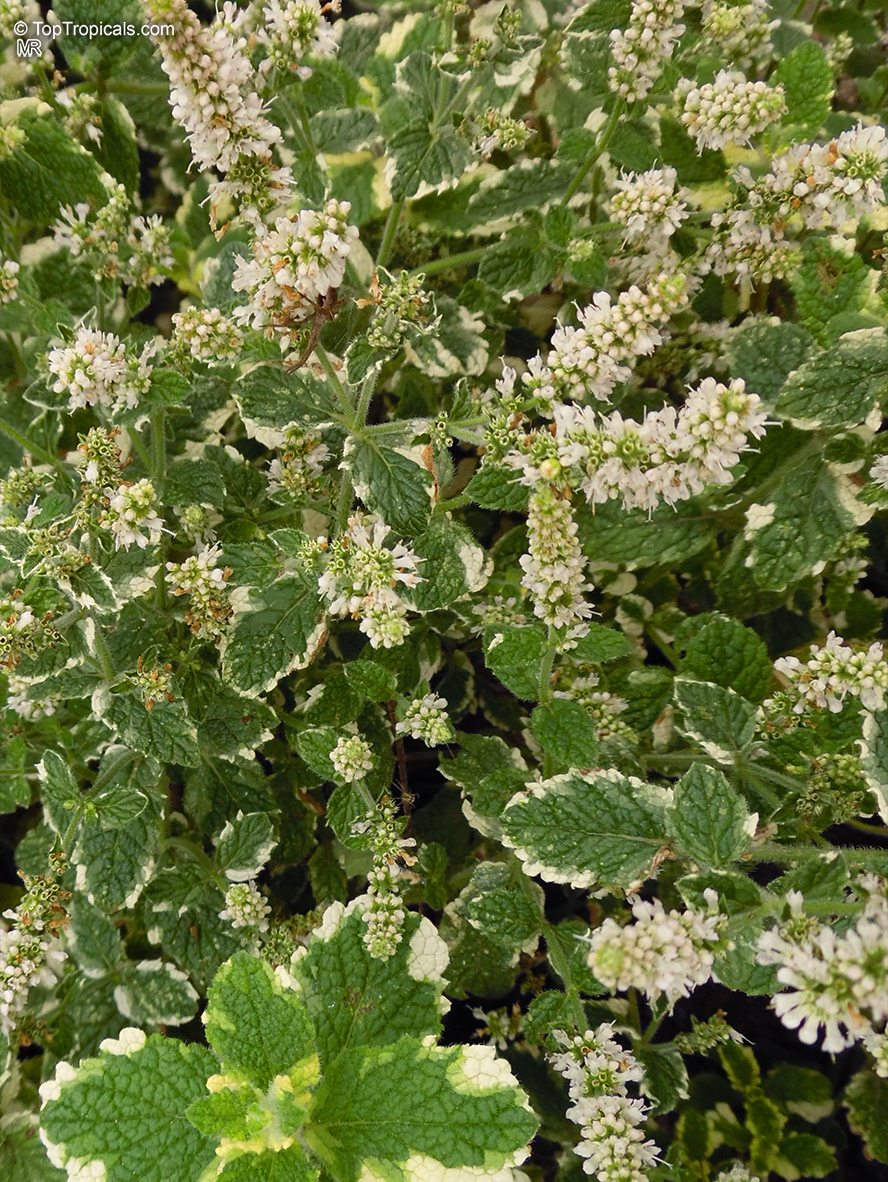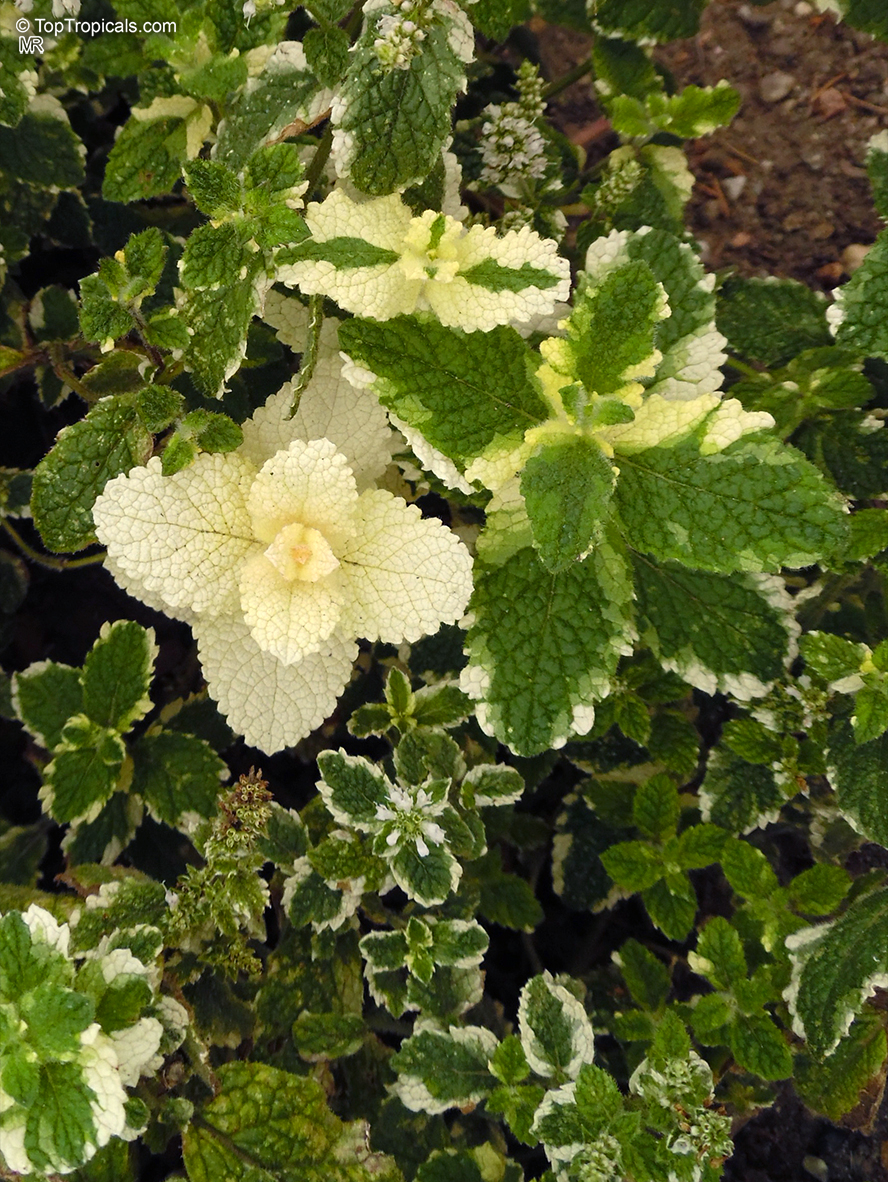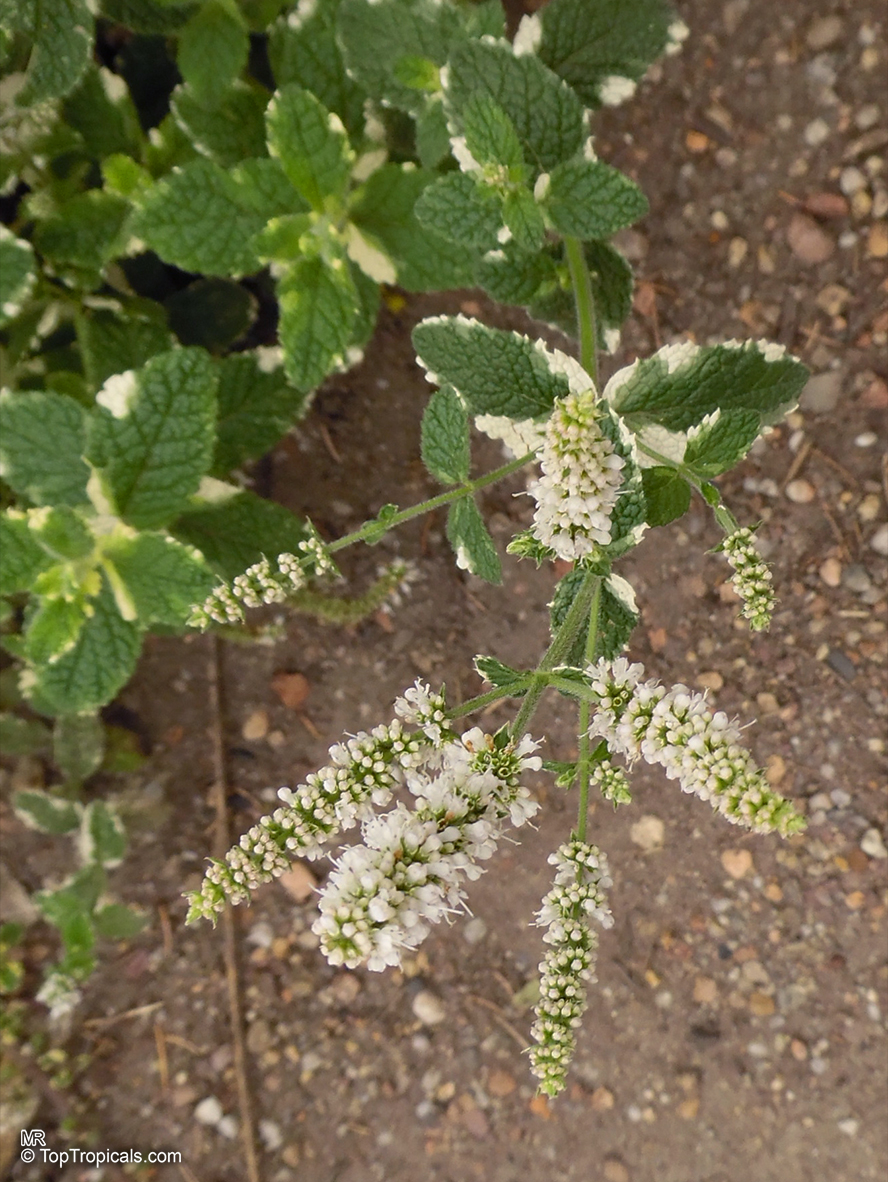Mentha sp. (Mint)
Top Tropicals Plant Encyclopedia
Botanical name: Mentha sp.
Common name: Mint
Family: Lamiaceae













Mint (Mint sp.) is a perennial herb that belongs to the Mentha genus, which is a large group of well-known herbs that are widely distributed throughout the temperate parts of the world. There are several different species of mint, including:
Apple Mint (Mentha suaveolens) - This hardy perennial is a very robust grower. Apple mint has interesting light green leaves that are somewhat hairy on the upper surface and downy underneath, with serrated edges. They can grow up to 3 feet high, but should be kept trimmed to a shorter height.
Curly Mint (Mentha spicata variety crispii) - This plant is valued more for its intricately curled, fringed leaves than for its fragrance. The foliage is dark green and lightly splotched with a contrasting lighter green. They can grow up to 2 feet high and are known to be invasive. Chefs often use curly mint for garnishes, but prefer the pleasant flavor of spearmint and peppermint.
Pennyroyal (Mentha pulegium) - This creeping mint is used occasionally as a ground cover in cool climates. It has many stems that grow up to 12 inches high and are covered with small, round to oval, dark green leaves. In the summer, it produces bluish-lilac blossoms. Pennyroyal has a pleasant lemony aroma and is used to flavor meat puddings and fish entrees.
Peppermint (Mentha piperita) - This spreading plant has a sharp, penetrating yet pleasant, mint aroma. It grows 1 to 2 feet high, but can reach 3 feet when in bloom. The lance-shaped leaves are deeply notched when mature and the flowers are usually purple.
Pineapple Mint (Mentha suaveolens 'Variegata') - Pineapple mint is a variegated hybrid of apple mint with white or cream blotches on its leaves. It does have a slight pineapple scent, but the aroma isn't always detectable. This mint is good for garnishes because the thick leaves are slow to wilt.
Spearmint (Mentha spicata) - This plant is similar to peppermint, but has a milder, sweeter flavor. It grows up to 3 feet tall and has dark green, lance-shaped leaves with a pointed tip. The flowers are typically pink or purple.
Water or Bog Mint (Mentha aquatica) - This mint is native to wetland areas and is adapted to growing in wet soil. It has a strong mint aroma and produces small, pink or purple flowers.
Mint is known for its carminative properties, which means that it helps to soothe the digestive system and relieve bloating and gas. It also has antiseptic properties and has been used in traditional medicine to treat a variety of ailments. Aromatherapy and massage practitioners often use peppermint essential oil to stimulate circulation, ease muscle fatigue, and reduce pain. The scent of peppermint is said to have a refreshing and invigorating effect, helping to increase alertness and reduce stress.
Peppermint is a popular ingredient in many recipes, and is often used to flavor teas, desserts, and other dishes. It is also used as a garnish or decorative element in culinary dishes. Mint plants are easy to grow and can tolerate a variety of conditions, including full sun or semi-shade locations. It prefers regular watering. Mint plants are also tolerant of occasional flooding and are best grown in USDA Zone 5-10
